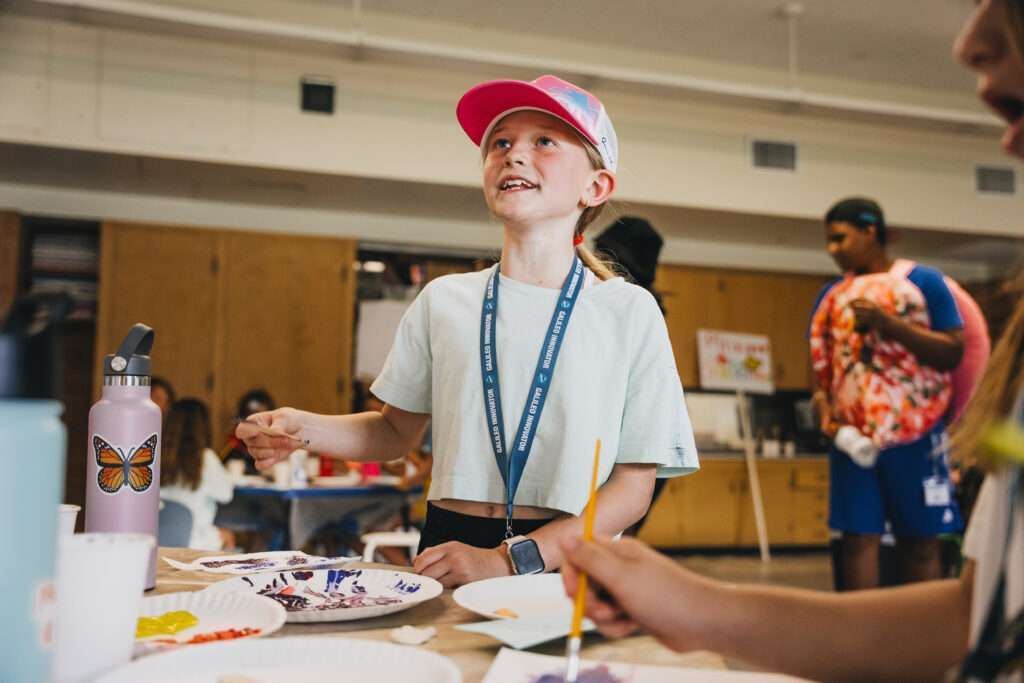The world is constantly innovating—so too should our children’s learning experiences.
Consider a world where your child is not just a passive observer but an active participant, a budding innovator. Summer STEM activities can transform learning into an exciting adventure, helping students explore the wonders of science. That’s the latent power of science, technology, engineering, and math (STEM). Early immersion in STEM activities and STEM summer camps don’t just boost academic prowess—they fuel cognitive growth, promote agile thinking, and unlock the power of imagination.
Ready to tap this potential at home or, perhaps, at a summer camp?
Buckle up as we explore some captivating STEM activities for kids that will spark not just interest but a love for innovation.
What Are STEM Activities?
STEM activities go far beyond standard classroom assignments—they’re a thrilling passport to the world of discovery. These hands-on projects are perfect for filling your downtime at home—whether it’s during the week or on the weekend—with fun and unique learning opportunities. STEM games for kids are purposeful, thoughtfully designed tasks that actively engage young children, promoting hands-on interaction, ideas, and in-depth critical thinking.
The underlying goal of school STEM activities for kids is to fuel curiosity and plant a seed that inspires a genuine love for learning. By diving into STEM, kids are encouraged to constantly explore, ask questions and seek answers through fun trial and error.
Some of the common benefits of STEM activities include:
- Boosts cognitive development
- Fosters problem-solving skills
- Encourages exploratory learning
- Promotes creativity and innovation
- Builds resilience
- Develop 21st-century skills
- Prepares for future tech-driven careers
- Encourages teamwork
- Educational growth
Easy STEM Activities for Kids
STEM learning doesn’t have to be complex. In fact, many activities can be done easily at home with common household items. Here’s a diverse list of 4 activities to kickstart your child’s curiosity:
#1 Shadow Play
This summer, try out shadow play to integrate both fun and learning. If you want to teach your child about ancient history, astronomy and timekeeping, you can channel the science experiments of the Greeks with a homemade sundial.
Steps for Parents:
- Find a sunny outdoor spot.
- Plant a straight stick (about a foot long) vertically into the ground.
- Mark the ground around the stick every hour to note where the shadow falls.
- Over time, these markings will represent the hours.
Learning Outcomes:
By creating a sundial, kids will grasp the basics of Earth’s rotation and the concept of time. Additionally, they’ll connect with ancient practices, understanding how our ancestors used basic tools and thinking to solve everyday problems. This is a perfect example of an easy activity that requires limited resources.
#2 Magnet Maze
Unleash the physics of magnetism with a fun, DIY magnet maze that’s sure to captivate and educate young minds. This fun STEM activity is both a playful game and a scientific exploration, teaching kids about magnetic fields, forces and interactions.
Materials Needed:
- A piece of paper or cardboard.
- A marker or pen to draw the maze.
- A paperclip or small metal object.
- A magnet (a fridge magnet or stronger, depending on the maze’s complexity).
Steps for Parents:
- Draw a maze on your paper or cardboard. Make sure to create a start and end point.
- Place the paperclip at the starting point of your maze.
- Position the magnet underneath the paper or cardboard.
- Have your child guide the paperclip through the maze without touching it directly.
Learning Outcomes:
As kids navigate the maze using magnetism, they’ll gain a deeper understanding of how magnets work and the basic principles of attraction and repulsion. The challenge of guiding the paperclip through the twists and turns of the maze also enhances their problem-solving and fine motor skills. It’s the perfect STEM project for any student looking to test out a fun activity. Enjoy a day filled with creativity by designing your magnet maze.
#3 Floating Egg Experiment
The floating egg experiment is a classic way to introduce kids to the concepts of density and buoyancy using simple household materials. With just an egg, water and salt, you can transform a regular glass of water into a scientific playground.
Steps for Parents:
- Fill the glass about three-quarters full with water.
- Carefully drop the egg into the glass. Encourage the child to observe that it sinks to the bottom.
- Have your child begin to add salt, a tablespoon at a time, stirring until dissolved.
- After adding several tablespoons, try placing the egg in again.
- At a certain point, the egg will start to float due to the increased density of the saltwater.
Learning Outcomes:
This fun STEM activity visually demonstrates the principle of buoyancy—how objects (like the egg) can float in solutions that have a higher density than themselves. As salt is added to the water, it increases the water’s density. When the salt water’s density surpasses that of the egg, the egg will float.
#4 Build a Popsicle Stick Catapult
One of the standout favorites among our campers is the STEM challenge of constructing their very own DIY catapult. It’s a wonderful fusion of history and physics.
Given the intricacies and detailed steps involved, we’ve linked to a comprehensive guide that’ll walk you through every part of the process. Whether you’re sourcing materials or ensuring the ideal launch angle, this guide will show you what to do.
Learning Outcomes:
Building a catapult introduces young children to fundamental concepts in physics and engineering. They’ll understand potential and kinetic energy—the energy stored when they press down the arm and release it to propel the projectile. Adjusting the catapult’s tension and angle can also teach the basics of trajectory and force, making it a multifaceted learning experience.
Explore the World of STEM with Camp Galileo
The world needs solution-oriented innovators. Whether kids are at home or camp, the four STEM activities discussed above can serve as powerful tools in their learning journey. These free, engaging STEM activities enable students to explore the mysteries of science. Each experiment, question and discovery is a stepping stone, guiding them toward a brighter future.
Do you want to continue to fuel your child’s learning development even when school’s out of session?
At Camp Galileo, we’re more than just a summer camp. Our acclaimed program seamlessly weaves creativity with STEAM and STEM exploration. Through our curated outdoor experiences and learning activities, campers cultivate confidence, resilience and an ability to think outside the box.
Enroll your kids at Camp Galileo today.
Sources:
Science Buddies. Build a Popsicle Stick Catapult. https://www.sciencebuddies.org/stem-activities/popsicle-stick-catapult






